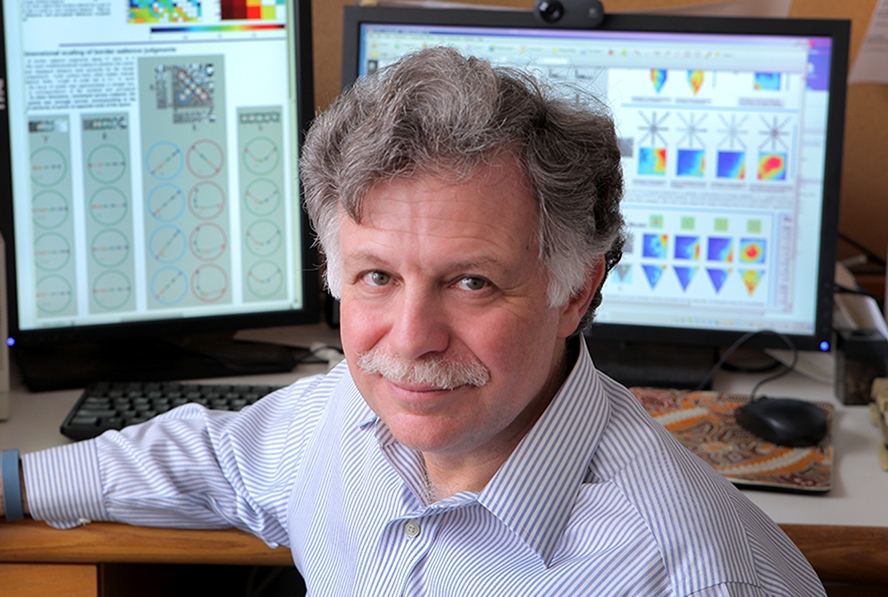Neuroscientist Dr. Jonathan Victor '80 joins an NSF-funded effort on the fundamentals of smell.
When we need to rescue people from collapsed buildings — or to search for bombs, land mines, missing persons or contraband — we typically employ dogs, with their finely tuned sense of smell, to locate them for us. But exactly how animals use that sense, known as olfaction, largely remains a mystery. Among those aiming to solve it is Dr. Jonathan Victor '80, the Fred Plum Professor of Neurology in Weill Cornell Medicine's Feil Family Brain and Mind Research Institute. Dr. Victor is part of a team of researchers that last fall received a $6.4 million grant from the National Science Foundation aimed at uncovering the universal algorithms at work in the nervous system when animals use olfaction to navigate. An understanding of this neural circuitry could shed light on the human brain — and spur the development of technology to replicate the services that animals provide, thus keeping highly trained and often valuable animals out of dangerous situations. Other potential applications could lie in medicine or agriculture; for example, Dr. Victor says, "if we understand how insects use smell to navigate, we have the potential to alter their navigational strategy — for example, by selectively altering the neurons that carry out crucial computations — so that they could no longer search for us effectively."
The question at the heart of the project is how circuits and networks of neurons execute complex calculations related to smell. Is an animal using temporal cues, spatial cues, or combination? Is it using its own life experience, or an innate understanding of the physics of odor and wind? As Dr. Victor puts it: "Do circuits carry out a function because of specialization at the synaptic level, the cellular level, the circuit level — or a combination of the above?"
The seven investigators, from institutions across the United States, comprise experts in such fields as psychology, engineering, applied mathematics and computational neuroscience. They will quantify "odor plumes" — the way odors move in space—and measure how animals behave in response to them. The team includes researchers who study this response in humans, dogs, cockroaches, terrestrial mollusks and hermit crabs; neuroscientists who work on mouse and fly models; and a physicist who specializes in the dynamics of plumes. Dr. Victor brings to the collaboration a combination of mathematical and experimental approaches he has developed in work on taste and vision. "Olfaction is not only a matter of distinguishing one chemical from another," he explains. "The nervous system has to figure out how to move through space, sample this complex spatial pattern, and make decisions based on it. It was a total eye-opener to realize how interesting and challenging a problem this is."
The investigators came together under unusual circumstances. In a new funding method, the NSF invited 30 researchers from branches of biology, physics and math to participate last summer in a five-day "Cracking the Olfactory Code" Ideas Lab work- shop — an event that Dr. Victor describes as an odd combination of "what you might consider a high school mixer, ‘American Idol,' and ‘Survivor.'" The first couple of days included social exercises for scientists to meet and greet, as well as a form of "speed dating" in which participants would chat with someone for two minutes and then move on around a circle. Potential collaborators were encouraged to think about big-picture questions they'd like to answer, and by the end of the week half a dozen groups had emerged to draft project proposals.
Soon after, the NSF selected three of the groups to share $15 million it had received through the federal government's BRAIN (Brain Research through Advancing Innovative Neurotechnologies) initiative, which President Obama announced in 2013. By studying different organisms, Dr. Victor's team expects to find a general strategy that transcends individual systems. "The brain of a fly, for example, has a profoundly different structure than the brain of a mouse, not just in size but in layout; the parts of one do not correspond to the parts of the other," Dr. Victor says. "Nevertheless, they both manage to implement the computations that allow them to navigate by smell."
— Andrea Crawford
This story first appeared in Weill Cornell Medicine, Vol. 15, No.2.


